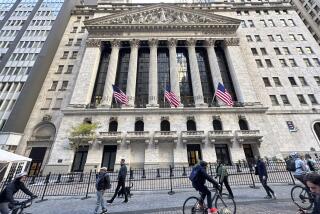Fed puts hold on interest rates in quiet end to busy year

After three successive interest rate cuts meant to head off a global economic slowdown and trade worries, the Federal Reserve hit the pause button at its last meeting of the year on Wednesday and signaled it was likely to remain on the sidelines all next year.
The decision to keep the Fed’s benchmark rate at between 1.5% and 1.75% was approved unanimously by all 10 voting members, whereas two or three had dissented in recent prior meetings.
In their new rate projections, 13 of 17 policymakers expect the Fed’s key interest rate to remain unchanged through all of next year. None see further cuts, while four predicted a single quarter-point rate hike in 2020.
While Wednesday’s decision was widely expected and marked a quiet end to a busy year, the central bank is looking at a potential minefield during the 2020 presidential election year.
Although the U.S. economy remains defiantly buoyant today, particularly the solid job market, there are signs that next year could be different. Among them: the sagging European economy with Britain’s uncertain exit from the EU, President Trump’s festering trade war with China and others, and a concerning surge in borrowing by major U.S. companies.
Also, the current good times, which began with recovery from the Great Recession in 2009, are long in the tooth, in the view of some economists. For most, the only questions about a slowdown is when it will come and how severe it will be.
And the Fed could be in a difficult position to deal with problems next year. For one thing, it has set the bar very high for raising the present, historically low level of interest rates.
“I would want to see inflation that is persistent, and that is significant,” Fed Chairman Jerome H. Powell said at a news conference following the two-day monetary policy meeting. Inflation has been muted, although it is projected to rise to 1.9% next year, close to the Fed’s 2% target.
Any action next year also will occur in a supercharged political atmosphere. Trump has already attacked the Fed again and again for not pumping up the economy, the health of which is critical to his reelection prospects.
Former Fed Chairman Alan Greenspan famously observed that the job of the central bank during good times is to take away the punch bowl just as the party really gets going.
That’s never an easy or popular decision — all the more so in a year when both political parties will be quick to jump on any decision that seems to help one side or the other.
“They would prefer watching paint dry, to be out of the equation,” Diane Swonk, chief economist at Grant Thornton and a longtime Fed watcher, said of central bankers.
Trump has been haranguing Powell all year long, pressuring him to lower interest rates and keep the good times rolling for next year’s election.
The political heat will only increase as U.S. economic growth is expected to slow — and could even plunge — if Trump escalates his trade war with China.
Trump is threatening to slap new 15% tariffs on about $160 billion worth of cellphones, laptops, toys and other imported goods from China on Sunday, although many analysts expect the duties will be suspended as the two sides continue to negotiate on a partial trade deal.
Powell said Tuesday’s agreement between House Democrats and the White House to advance the revised North American Free Trade Agreement was positive, but noted that the bigger threat is the trade conflict with China.
Prior to its latest meeting, the Fed made three straight quarter-point rate cuts to cushion the economy against slumping manufacturing and trade. Powell said Wednesday that he believed those actions have now provided enough insurance against those risks, and in recent weeks recession worries have receded.
“I think both the economy and monetary policy right now are in a good place,” he said.
In their updated outlook released Wednesday, Fed officials on average projected economic growth to slow to 2% from 2.2% this year. The economy expanded by almost 3% in 2018, fueled by the Republican tax cuts.
Growth this year, however, has been uneven. Business investments and trade have slumped, even as job growth has exceeded expectations and continues to prop up consumer spending, the main driver of the economy. The jobless rate is now down to a half-century low of 3.5%, and the Fed doesn’t see it moving up much from there for the foreseeable future.
Powell opened Wednesday’s news conference by paying tribute to the legendary Fed Chairman Paul A. Volcker, who died Sunday. Powell noted Volcker’s “courage, integrity and tenacity” in pursuing policies beneficial to Americans, most notably the grit and indifference to political pressure that he showed in jacking up interest rates to choke off the spending spree that had fueled double-digit inflation some 40 years ago.
Powell, whose credibility has taken a hit for making a sharp pivot from hiking rates last year to cutting them amid Trump’s attacks, has insisted that the Fed would operate independently and free from political influence.
In the coming months, he may well need to show the kind of iron will and courage displayed by Volcker — whether it’s taking away the punch bowl should inflation rear its head or further stimulate the economy if it weakens, no matter the political price.
Said Ryan Sweet, an economist at Moody’s Analytics: “Not bending to political pressure and staying the course — that’s the lesson that Powell can draw from Volcker.”
More to Read
Get the L.A. Times Politics newsletter
Deeply reported insights into legislation, politics and policy from Sacramento, Washington and beyond. In your inbox three times per week.
You may occasionally receive promotional content from the Los Angeles Times.







